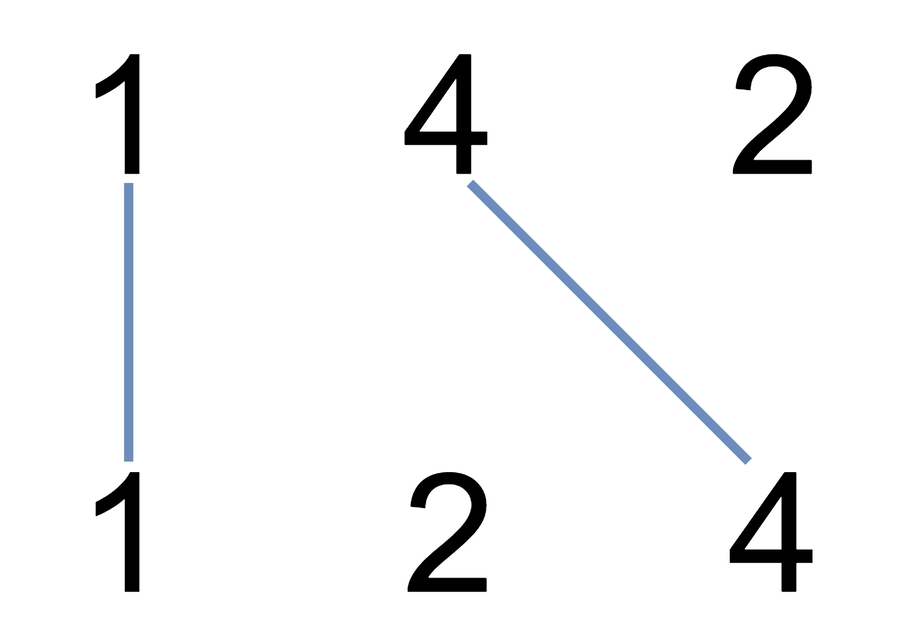20. Uncrossed Lines
We write the integers of A and B (in the order they are given) on two separate horizontal lines.
Now, we may draw connecting lines: a straight line connecting two numbers A[i] and B[j] such that:
A[i] == B[j];The line we draw does not intersect any other connecting (non-horizontal) line.
Note that a connecting lines cannot intersect even at the endpoints: each number can only belong to one connecting line.
Return the maximum number of connecting lines we can draw in this way.

Example 1:
Input: A = [1,4,2], B = [1,2,4]
Output: 2
Explanation: We can draw 2 uncrossed lines as in the diagram.
We cannot draw 3 uncrossed lines, because the line from A[1]=4 to B[2]=4 will intersect the line from A[2]=2 to B[1]=2.
Example 2:
Input: A = [2,5,1,2,5], B = [10,5,2,1,5,2]
Output: 3
Example 3:
Input: A = [1,3,7,1,7,5], B = [1,9,2,5,1]
Output: 2Solution: (DP)
Time Complexity: O(nm) Space Complexity: O(nm)
Last updated
Was this helpful?